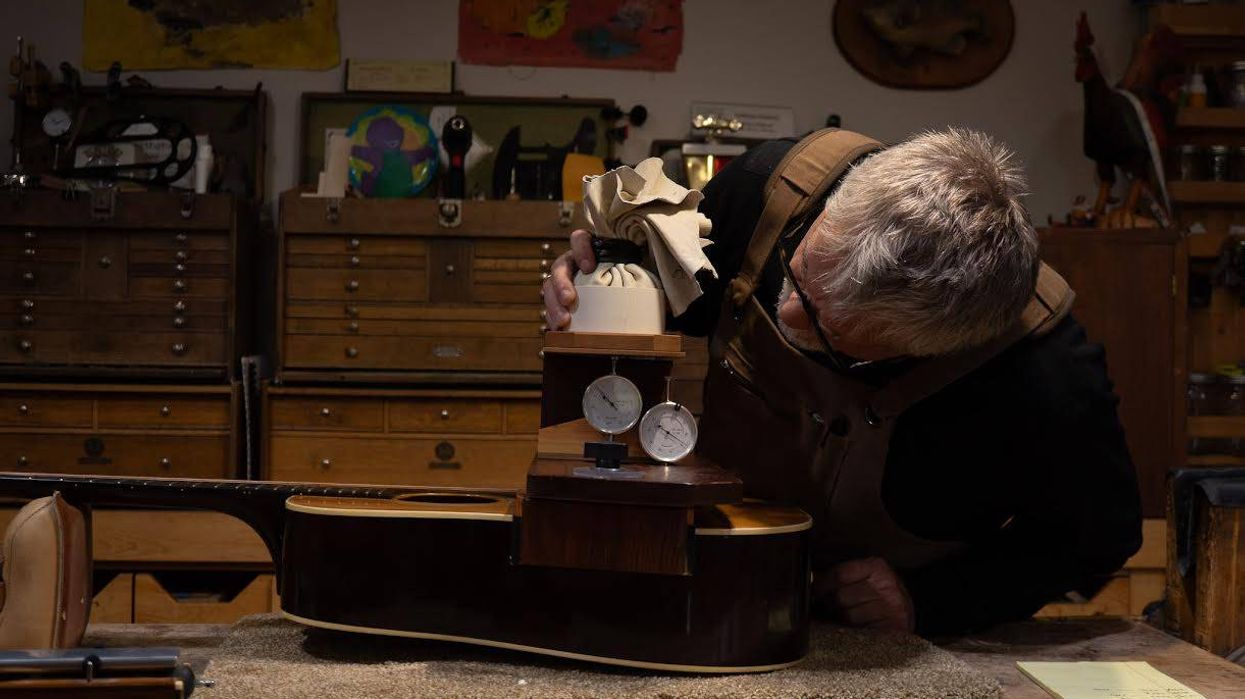When was the last time you saw someone playing an acoustic bass guitar (ABG) in a campfire sing-along? Perhaps this is a more relevant question: When was the last time you heard someone playing an unamplified ABG over an accompanying guitar? The number one gripe bassists have about ABGs is their lack of volume. Once the guitarist strums a chord, almost any ABG will fail to cut through. That’s no surprise, really, because as we’ve discussed previously, we bassists need roughly 10 times more power to bring our lower frequencies to the comparably audible level of other, higher-pitched instruments. (If you missed this, check out “Power to the Bass Peeps!”) On an ABG, power mainly relates to the internal volume of its body. Of course, there are other factors, such as the stiffness of both the top and back, the internal bracing, and even string action.
Wait—string action? Yes, but the effect is not dramatic ... unless your action is dramatically bad. (Sorry, couldn’t resist.) The short explanation is that a higher action creates a steeper angle at the bridge, which in turn puts a higher amount of pull on the top, thus increasing its up and down movement. This results in a higher initial attack and a shorter sustain. (And that’s partially where twang comes from, but that’s another story.) So, depending on how the instrument was built, there are differences in loudness between one ABG and another, but these differences won’t save us from being washed away by any old acoustic guitar.
Many ABGs have bodies that are similar in size to their guitar counterparts, so it’s no wonder they can’t compete in terms of loudness. But building ABGs with bodies 10 times as large as a guitar seems impractical, to say the least. Additionally, most bassists have developed a rather soft touch on their electric instruments, which are often the ones they started on. It’s easy to spot those ABG players who started on an upright. They’re quite familiar with the more robust attack required of an acoustic bassist.
If you play an ABG, what can you do to improve your chances of being heard? Playing with a flatpick adds a brighter initial click, and that helps cut through. If you’re determined to play fingerstyle, adding a thumb rest helps you dig in more. But these are pretty much the extent of your options.
Some builders believed they could increase volume by incorporating a high, upright-like bridge and tailpiece into their designs, arguing that the longer lever arm of the bridge allows the vibrating strings to provide additional movement to the top. Unfortunately, the principle of the lever has two sides: Whatever you gain in increased pull is lost in amplitude at the other side! Here, it seems the best way to deal with the law of energy conservation is to keep the input more constant.
Unless you want to end up with a huge Mexican guitarrón, it seems there’s no way to avoid using at least a small amp to be heard with other instruments. And this is also the reason why—in contrast to acoustic guitars—every ABG comes equipped with a pickup.
The unavoidable amp might be the main reason why most low-enders cling to their electric basses, even when a song requires the atmospheric tone of an ABG. But different instruments exist for a reason, and if you’d like to rekindle your interest in ABGs, listen to Jonas Hellborg’s aptly named The Silent Life. If it makes you want to get an ABG, don’t forget to check out its electrified sound, as you’ll use it more often than not.
Unfortunately, most ABG pickup systems consist of a piezo strip placed directly under the saddle. It’s not that these won’t work okay, but the placement of an under-saddle pickup already tells you that it’s not going to give you the tone you hear coming from the instrument’s soundboard. (We explored placement and types of pickups in two earlier columns, “Positioning Piezo Pickups on an Acoustic Bass Guitar” and “Amplifying an Acoustic Bass Guitar.”)
In recent years, the ukulele bass has emerged as a real competitor to the ABG—at least marketwise. Uke basses look like toys, and the sound of their rubber strings won’t replace a real acoustic or electric bass anytime soon. But they’re inexpensive and fun to play for that occasional acoustic set, and there’s something very upright-ish about the tone of those rubber strings.








![Rig Rundown: AFI [2025]](https://www.premierguitar.com/media-library/youtube.jpg?id=62064741&width=1245&height=700&quality=70&coordinates=0%2C0%2C0%2C0)












 Shop Scott's Rig
Shop Scott's Rig















































